If you’ve been lucky enough to find yourself in Paris in December, you’ll have likely admired the sparkling window displays, and might have delighted over a curious-looking cake featuring in those of the city’s pâtisseries.
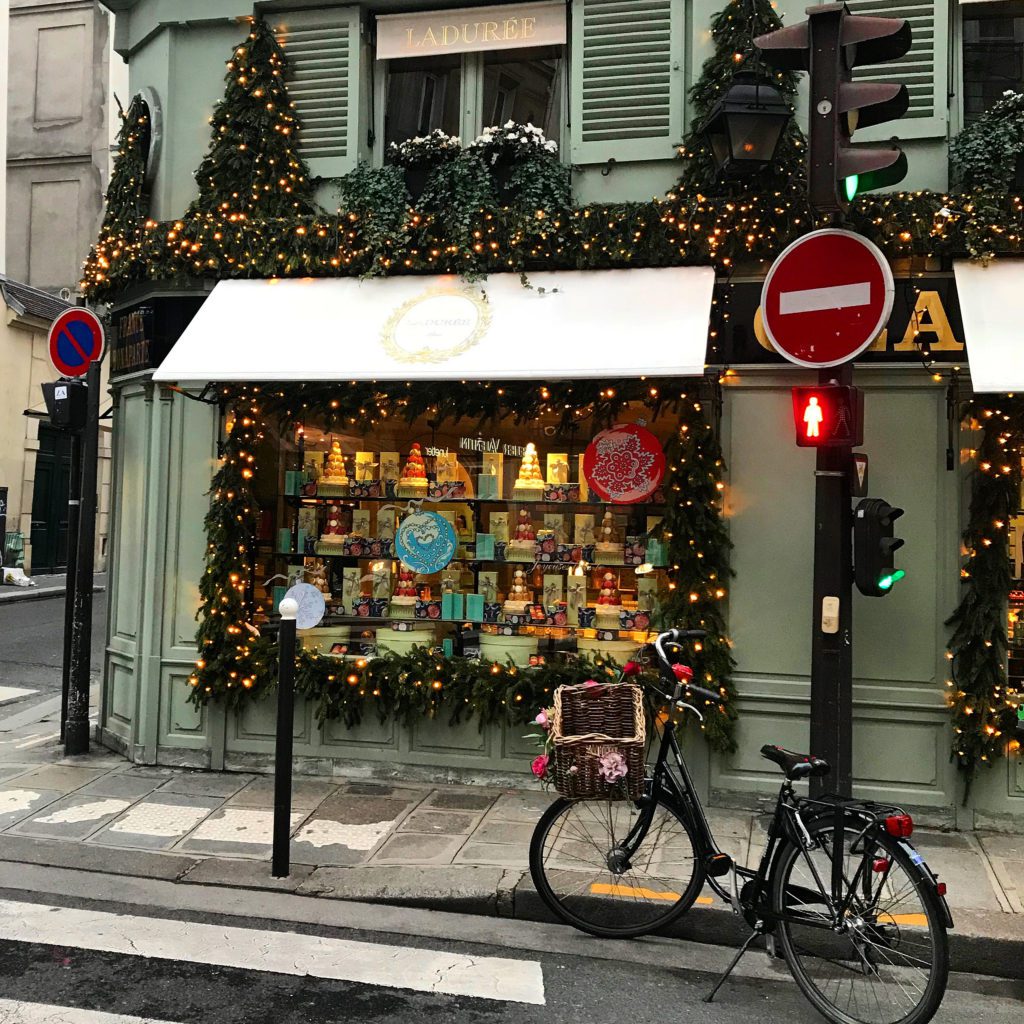
The Bûche de Noël — or, Christmas Log — is said to date back to around 1870, when a Parisian pastry maker was inspired by the Christmas eve ritual of burning a log in the fire (a tradition that can in turn be traced back to the winter solstice rituals of ancient Celts). With fireplaces becoming smaller, the practice was dying out … and so the Christmas log moved from the hearth to the table, in the form of a rolled sponge cake decorated in lashings of chocolate and dustings of sugar to appear as a snowflake-shimmered log.
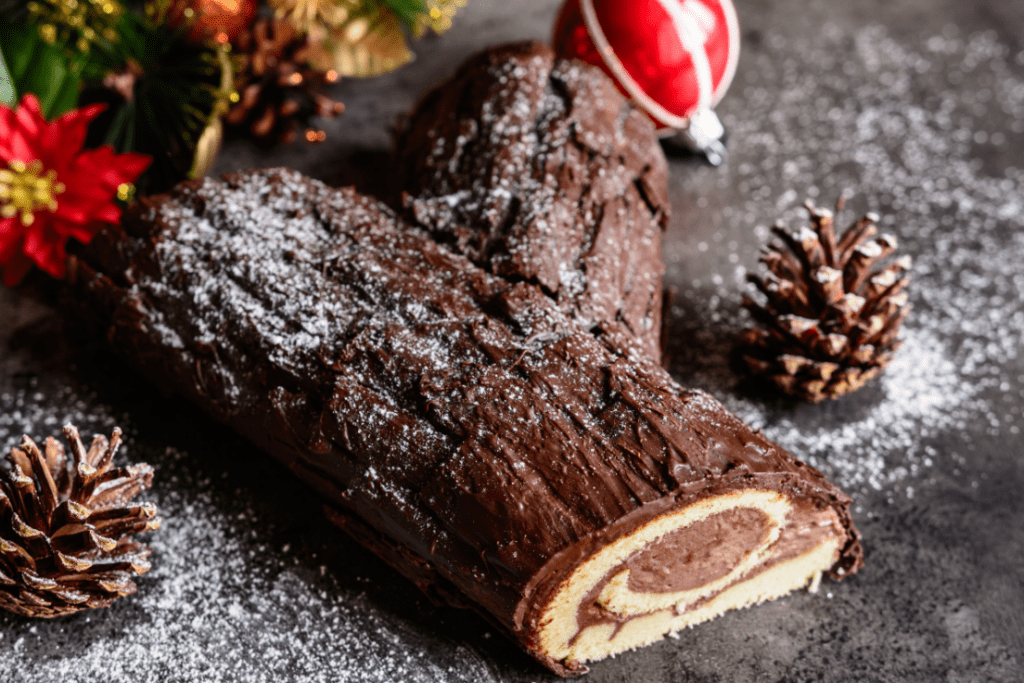
These days, the competition among Parisian pâtissiers to come up with the most inspired bûche is fierce. Creativity is such that many logs are only so in name; these Christmas bûches are all sorts of flights of gastronomic fancy, such as fairytale-like horses and carriages, or storybook mountain chalets, or macaron-laden Ferris wheels …

But you can still find many logs that take you right back to the origins of this wonderful Parisian tradition.
Ladurée
This much-loved pastry house, and pioneer of the macaron, whips up a classic-chic bûche, such as this chestnut-infused log:
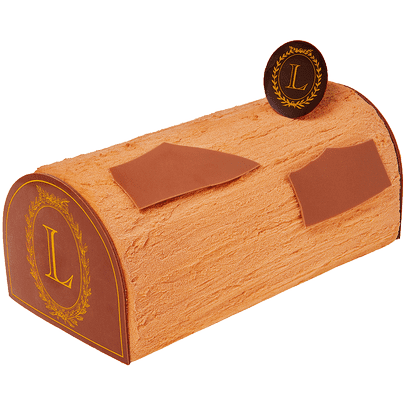
But how divine is its ‘Marie Antoinette’ version, inspired by a gâteau the house created for Sofia Coppola’s film about the cake-loving queen:

Pierre Hermé
The rival macaron maker is celebrated for another gorgeous rose concoction, the Ispahan. At Christmastime you can buy it in log form, along with more classic chocolate-covered options.
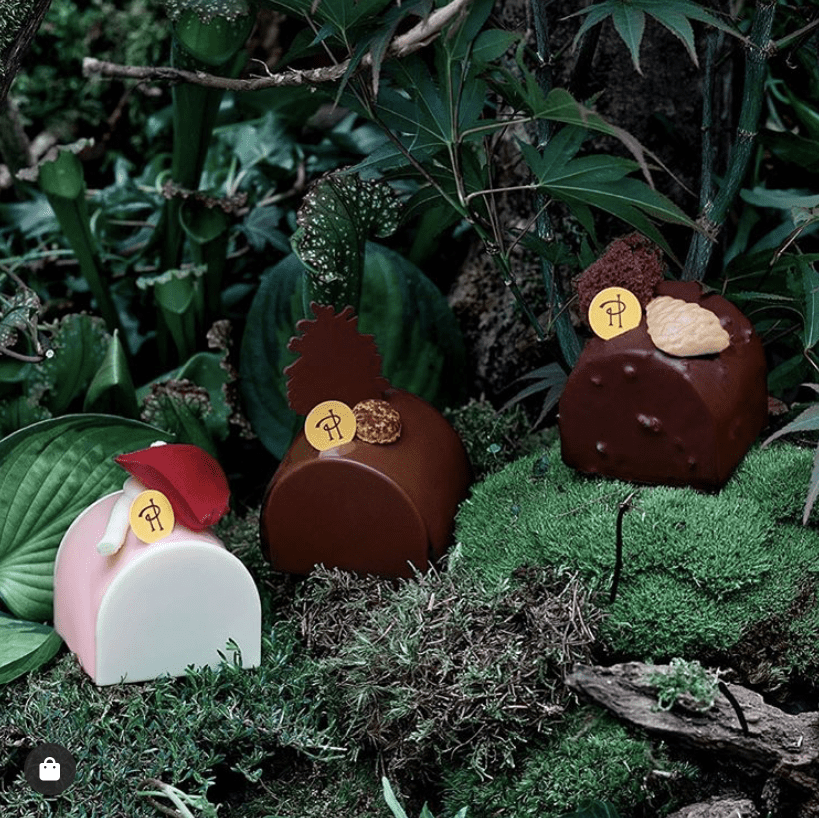
Angelina
At the legendary Rue de Rivoli tea salon, the meringue, chestnut and cream deliciousness that is the Mont Blanc is the star of the show, and come December it’s also available à la bûche:

Stohrer
Meanwhile, Paris’s oldest pâtisserie serves up a log version of its signature Baba au Rhum:

As well as bûches inspired by other much-loved Parisian cakes, such as the Saint-Honoré and the Opéra.
Lenôtre
Seeming to hark right back to those Celtic yule log origins is this elegant pinecone-inspired creation:
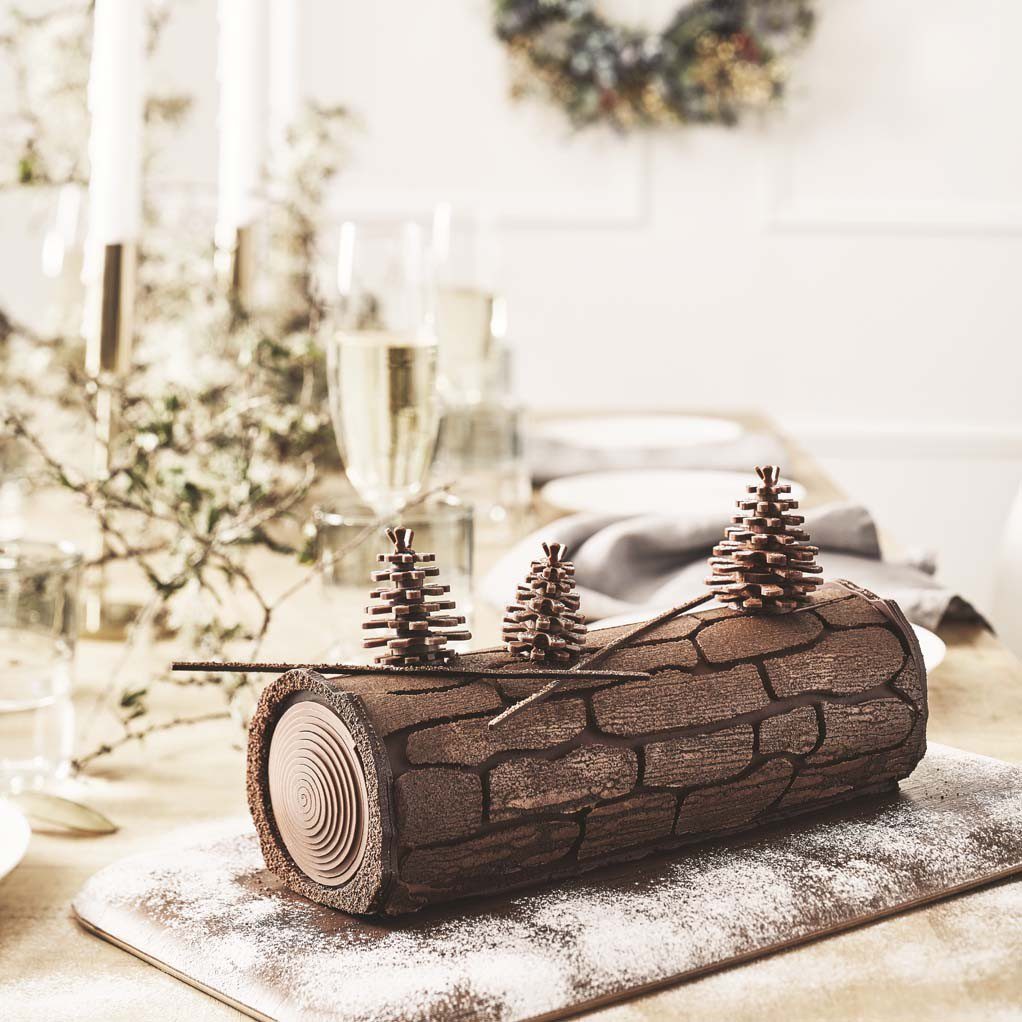
They’re almost too pretty to eat, non? But only almost …

